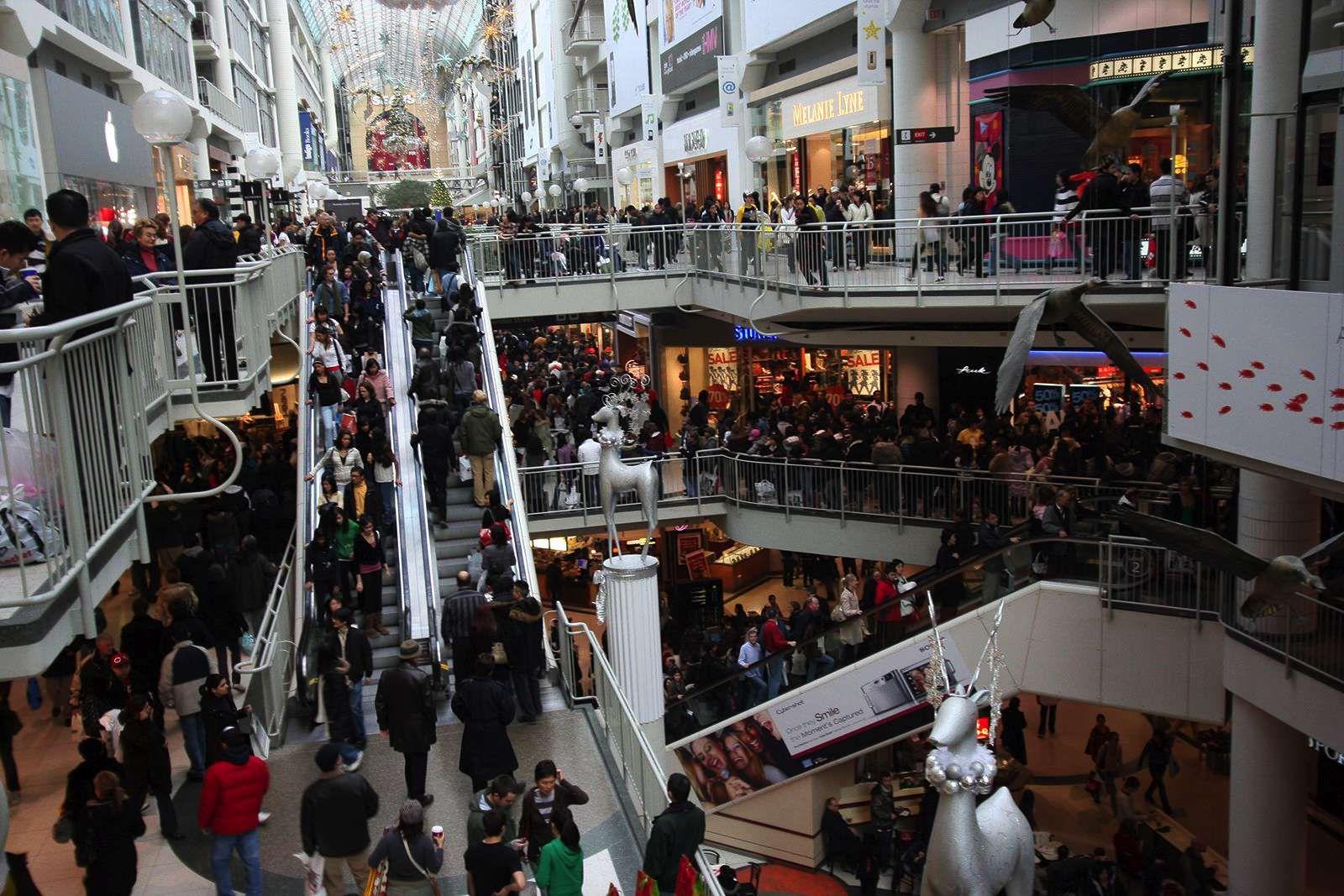The day that started as a day to remember the Pilgrims and Wampanoag tribe coming together to give thanks for their first successful harvest in 1621 (or at least that’s what we’re told in elementary school) has spun into a day of overeating, overspending and apparently overworking.
At least that’s what’s happening in Connecticut this Thanksgiving Day. In a demonstration of the twisted notions Thanksgiving has taken on, the Westfield Connecticut Post Mall in Milford, Connecticut distributed a memo to its retailers ordering them to open their doors at 6 p.m. Thanksgiving Day as a head start to the Black Friday festivities.
“In support of our retailers and customers who are eager to get a jump on Black Friday shopping, Connecticut Post will open at 6 p.m. on Thanksgiving and will remain open through 10 p.m. on Black Friday,” the memo said. “Opening at 6 p.m. is mandatory.”
The memo also charmingly requested that employees refrain from posting comments about the request on any social media sites. Clearly, the mall’s General Manager Dan Kiley knew there would be some negative response to their forced early shopping spree. Otherwise, there would have been no need to discourage any online “advertisement” from the employees forced to work on Thanksgiving. And no holiday bonus was mentioned in the memo, for the record.
The term “Black Friday” was coined in the 1960s, well into the tradition of post-Thanksgiving shopping sales, as a term to recognize the start of the holiday shopping season. The “black” refers to retailers’ sales moving from the red, or below their revenue goal, to the black by the time the holidays end and the New Year arrives.
Today, stores open as early as Thursday night and stay open through Friday as hoards of people roll in to buy things they may or may not need at discounted prices. What began as a well-intentioned sale has grown into a violent national phenomenon. Since 2006, seven shoppers have been killed in the yearly shopping-spree-turned-mall-brawl, and several have been injured. Now, with stores and malls such as the Post Mall beginning their sales on Thanksgiving, there is a growing fear that the bloodbaths of Black Friday will seep into the family-oriented day of thanks.
While Thanksgiving purists may decry the destruction of Thanksgiving’s integrity, the fact remains that these stores would not open so early if there were no demand for them. Black Friday has become as much of a Thanksgiving tradition as the turkey, and with fewer people willing to go shopping on the holiday, those who are game are likely to snag the best sales before the Friday morning crowd rolls in.
Does this mesh with the “true” meaning of Thanksgiving? Probably not, but let’s be honest, the Thanksgiving we’re accustomed to is unrecognizable from the one the Pilgrims and Wampanoag tribe celebrated. While Americans today likely don’t wish to party like it’s 1621, it’s fair to say that every facet of Thanksgiving has been blown incredibly out of proportion.
First, there’s the Macy’s Thanksgiving Day Parade in New York, where enormous and costly star-studded floats gallivant through the city in a display of extravagance as Americans watch the show in person and on their televisions. While it’s safe to say the original Thanksgiving celebrants did not have displays such this, the parade is a manifestation of American excess, all wrapped up in a pretty float with Katy Perry lip-synching at the top.
Then there’s the Thanksgiving meal. According to recorded history, the first Thanksgiving meal likely featured duck, venison, seafood, cabbage, onions, corn and squash. By no means a modest meal, but it is doubtful they were able to consume any of these foods to excess. Today, an average Turkey Day feast consists of bread stuffing, green bean casserole, glazed carrots, mashed potatoes, bread, sweet potatoes with marshmallows, multiple pies sand yes, an enormous roasted (or deep-fried) turkey. Eating until one can’t move is encouraged, and most people end their meals floating off into a tryptophan-induced haze, which can only be broken by the prospect of a violent shopping spree of Black Friday sales.
Is this what Thanksgiving has come to? Every “tradition” seems to fall under the overarching theme of excess: excess in display, excess in food and excess in spending. All of it seems to be the polar opposite of the holiday’s intentions, yet for the United States, it may just work.
So the holiday has become extravagant in its traditions. So what? As twisted as it may be, these traditions bind people together. All of this excess brings families together year after year, and in the end, that’s what the holiday is about. So eat too much, drink too much and spend too much this Thanksgiving, knowing that you are upholding tradition.



















































































































